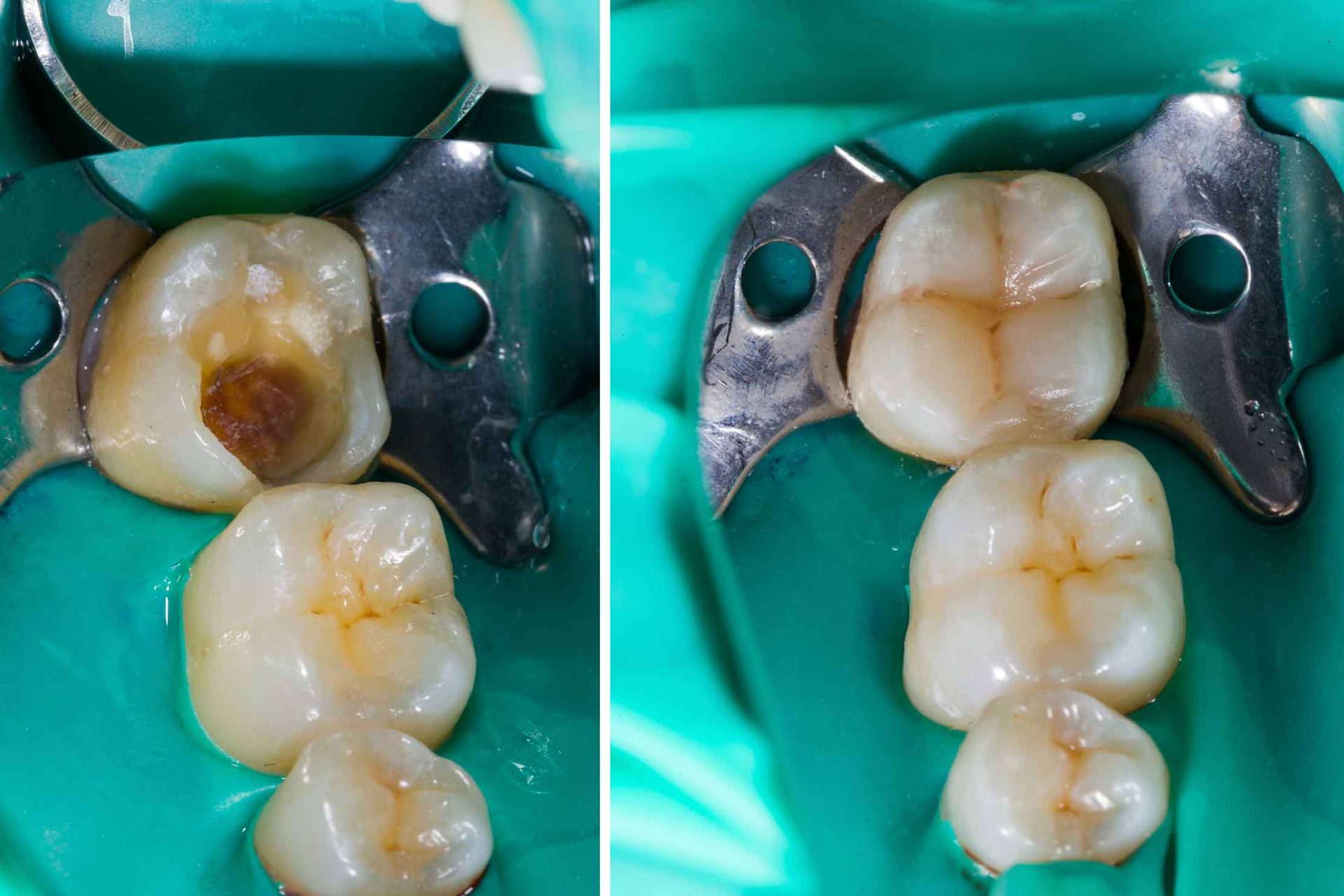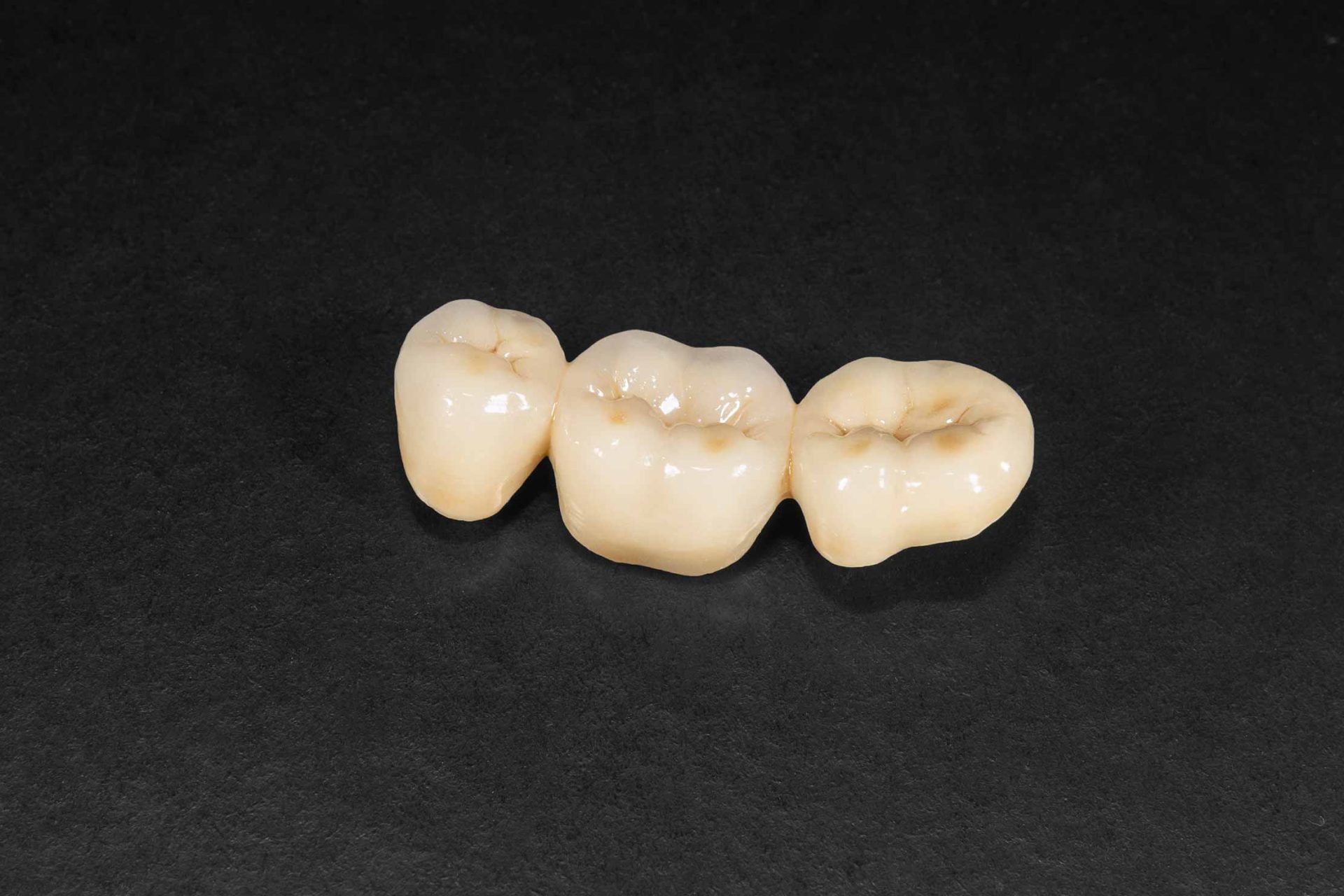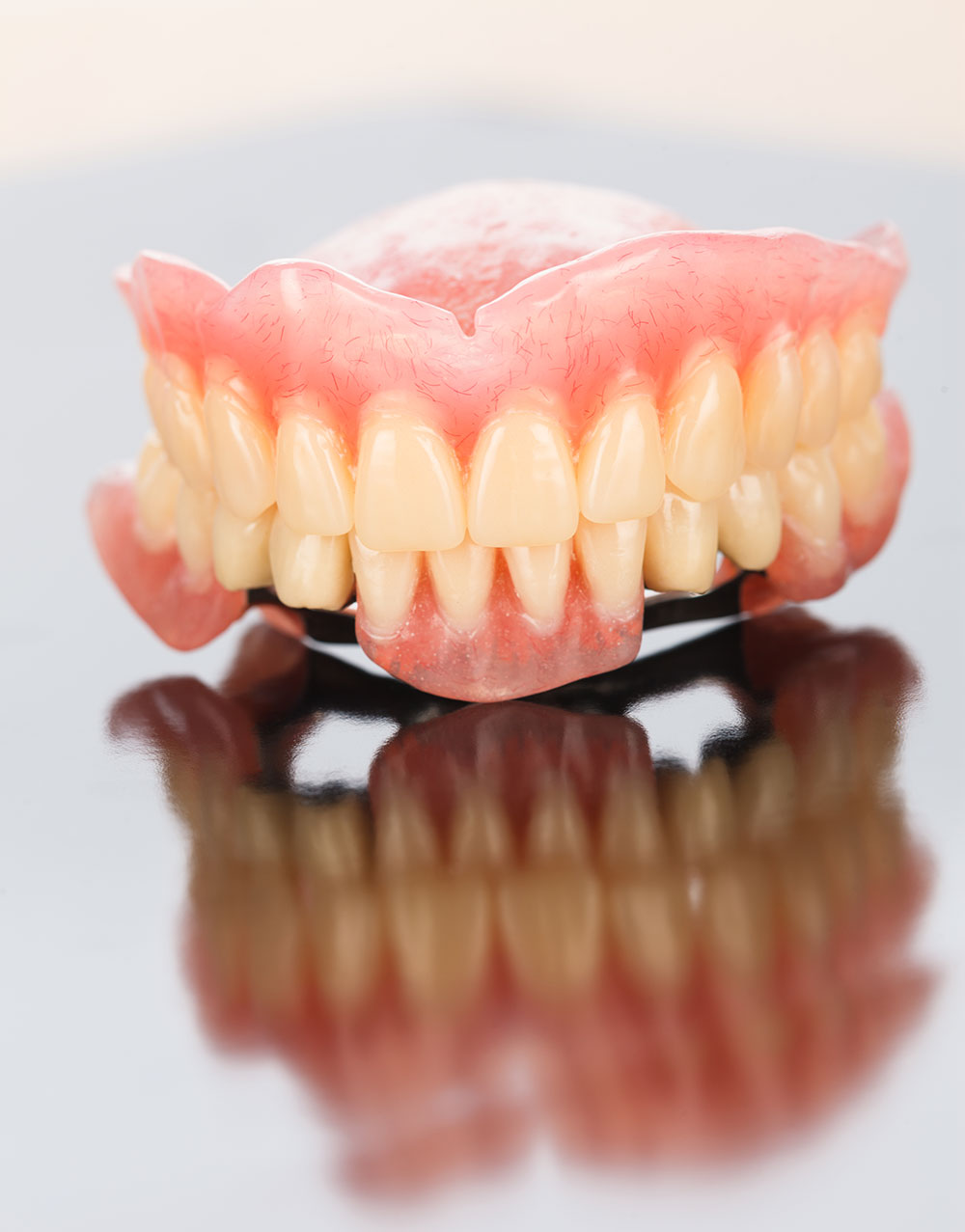A composite (tooth colored) filling is used to repair a tooth that is affected by decay, cracks, fractures, etc.
What is necessary to know about the fillings:

A crown is like a cap or cup that sits over your existing tooth. Crowns look, feel like natural teeth and are usually made of ceramic or zircon oxide. They hold the tooth together and strengthen the tooth to prevent fracture.
A dentist will recommend dental crowing if you have the following conditions:

A bridge is a prosthetic device that replaces a tooth that’s entirely missing. It’s composed of a pontic (the artificial tooth) that’s attached to one or two crowns on either side, and literally “bridges” the gap left in your smile left by a missing tooth.



There are times when a tooth suffers damage (from decay, for example) that is too extensive to be treated with a simple filling — but not extensive enough to need a full-coverage crown. In these cases, the best option for restoring the tooth may be an inlay or onlay.
Both inlays and onlays are considered “indirect” fillings, meaning that they are fabricated outside the mouth (generally at a dental laboratory), and then bonded to the tooth by the dentist.
Today’s cosmetic dentures offer a more natural and comfortable fit due to advances in materials and treatment planning.
During a consultation, your dentist will evaluate your dental health and discuss your concerns and goals before recommending the tooth replacement solution best suited to your personal needs and desires.
